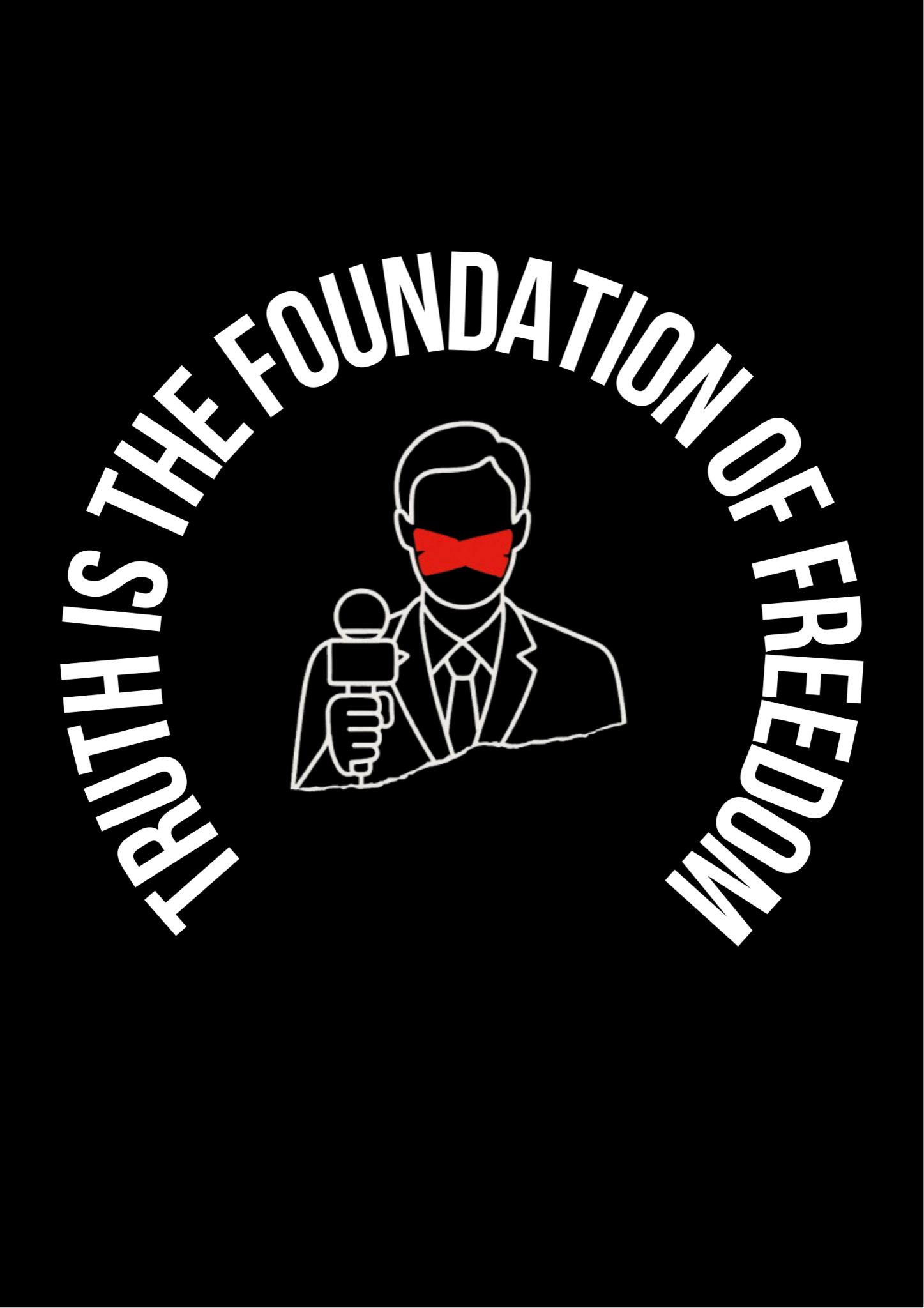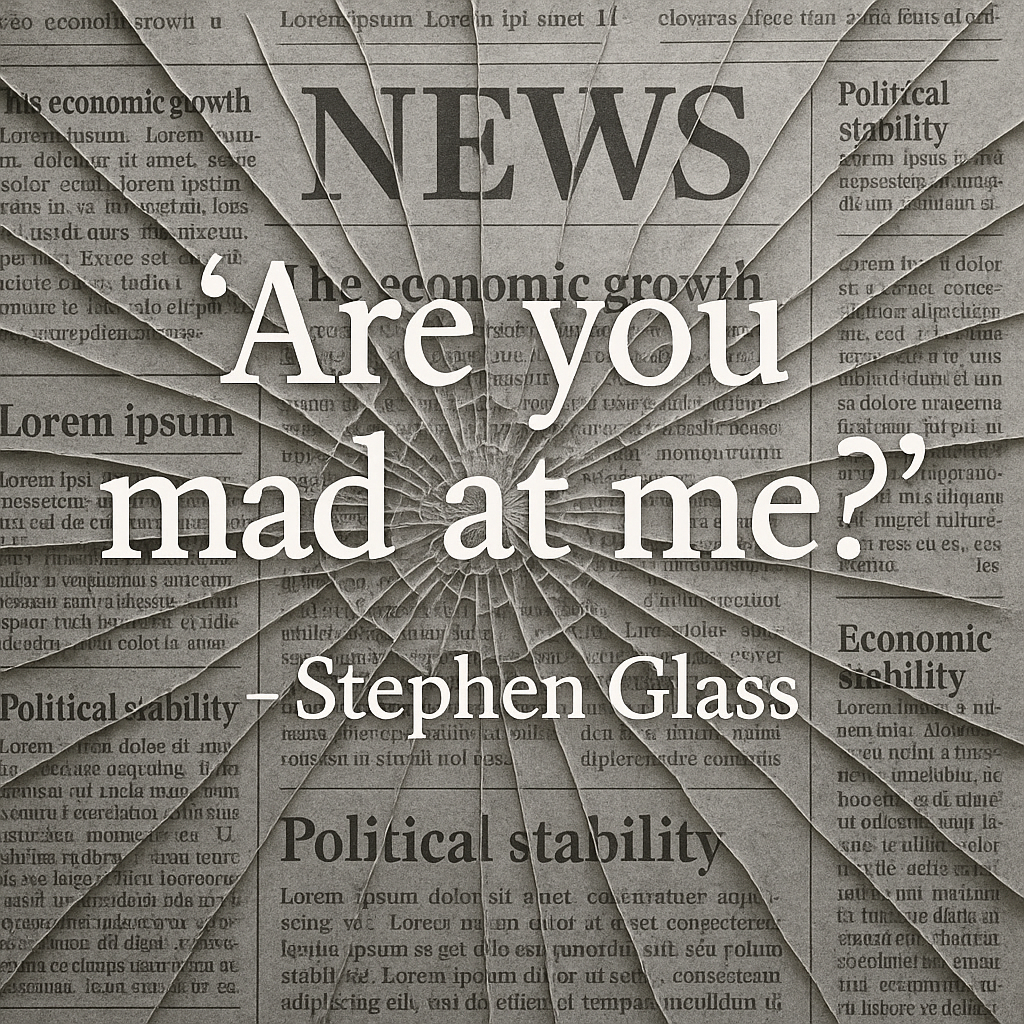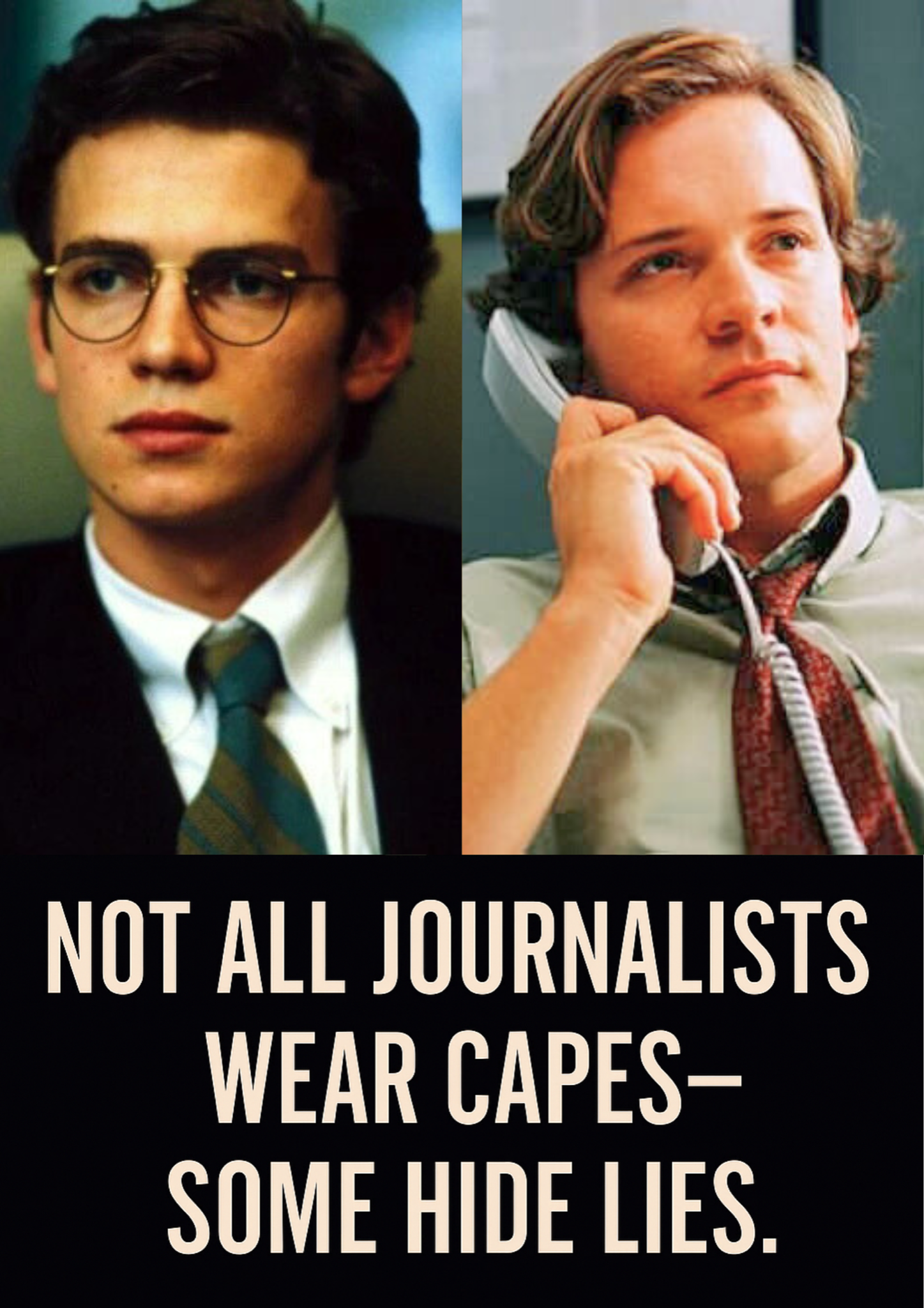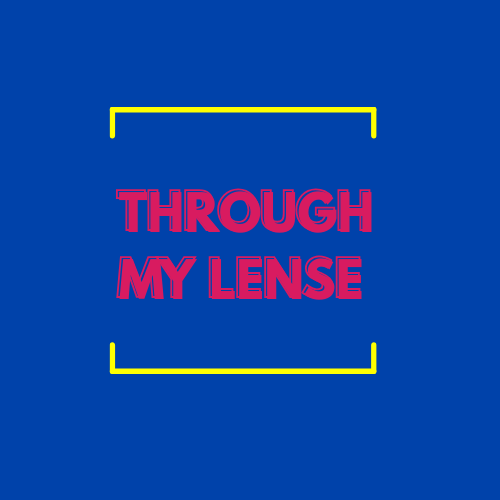
Shattered truths: Journalism, Ethics, and the role of the press in democracy
Task 2 Mainstream Narratives
Introduction
"In a world increasingly plagued by misinformation, the 2003 film Shattered Glass, directed by Billy Ray, stands as a haunting reminder of the fine line between compelling storytelling and dangerous fabrication." The film shows Stephen Glass's real-life demise as a young journalist at The New Republic who fabricated 27 of his 41 published stories, exposing the flaws in even the most prestigious newsrooms (Decent Films, n.d.; IMDb, n.d).
In addition to being a personal failure story, Shattered Glass serves as a warning about the negative impacts of unethical journalism on democracy, public trust, and the journalistic business as a whole. This article will examine the film's investigation of journalistic ethics, the democratic purpose of the media, the loss of trust, and the complex portrayal of journalists as both heroes and villains.
Film Summary and Context
Stephen Glass, a notable reporter for The New Republic in the late 1990s, was well-known for his explosive scoops and colourful narrative. However, he created sources, quotes, and entire events, weaving sophisticated deceptions that fooled editors and colleagues alike, so his rapid rise was built on lies (Decent Films, n.d.; IMDb, n.d.).
The film focusses on editor Chuck Lane's unrelenting pursuit of the truth when Glass's lies are uncovered. The magnitude of Glass's deception is apparent as Lane investigates: "A kind of dread begins to grow as it becomes obvious to Lane that the story will not hold water, as phone numbers go missing, files are left at home, and phone calls aren't answered" (Ebert, 2024). Glass was dismissed as a result of the episode, and the magazine was forced to own its mistakes.
Journalism and Democracy
Democracy is built on a free and moral press that informs the public, serves as a watchdog, and holds those in positions of power accountable. "Journalism's first obligation is to the truth," argue media theorists Kovach and Rosenstiel. When journalists fail to fulfil this role, it has major consequences: misleading information distorts public perception and suppresses free speech. This is well depicted in Shattered Glass, where Glass' fabrications influenced perceptions with stories that never happened, resulting in "false public realities" (Decent Films, n.d.).
"When journalists lie, they not only betray their editors, but they also betray the public trust and undermine democratic discourse," says one reviewer (The Biweekly Broadcast, 2017). "The movie makes interesting comments on accountability and reliability because although Chuck, the editor, is a stickler for fact checking and truth, he manages to let several of Glass' stories slip past because of Glass' ability to sell his news stories" (The Biweekly Broadcast, 17). This demonstrates how the film depicts Lane's battle to restore the truth while
emphasising the important role of the press. The lesson is clear: without careful verification and a commitment to the truth, media becomes an instrument for deception rather than enlightenment.
Ethical Failures in Journalism
Stephen Glass' conduct exemplifies a classic ethical breakdown. The Society of Professional Journalists' (SPJ) Code of Ethics calls for neutrality, accountability, accuracy, and verification. Glass broke each of the following rules: • Accuracy: According to Ebert (2024), Glass "deposited 27 steaming piles of fabricated falsehoods" on the pages of the New Republic. He broke the most basic journalistic rule by faking statements, sources, and events. • Verification: He went to significant lengths to deceive fact-checkers, inventing voicemails and websites to support his claims (IMDb, n.d.; IvyPanda, 2021). "More facts come to light proving Stephen fabricated stories, but he continues to hopelessly deny it to Chuck and is subsequently fired," the film clearly states (IMDb, n.d.).
• Fairness and objectivity: Glass' work was intended to entertain and impress rather than educate. "Stephen developed a habit of lying and using conception to write most of his articulate facts and ideas," according to one inquiry. The end outcome is increased dishonesty, which is rewarded (Ivy Panda, 2021). • Accountability: He dodged accountability until his confession was forced by undeniable evidence. According to the SPJ Code (2014), journalists should be transparent and accountable.
The importance of editorial supervision is also highlighted throughout the film. Chuck Lane eventually becomes the pinnacle of moral rehabilitation after being sidetracked by office politics and hesitant to confront the popular Glass (Decent Films, n.d.). Lane's insistence on comprehensive fact-checking, as well as his willingness to respond to staff criticism, demonstrate the importance of leadership in preserving journalistic standards. According to one critic, "Charm and likeability play a big role in Glass' success, but when looking at the facts of the case from an outside source, these are irrelevant" (The Biweekly Broadcast, 2017).
Journalists as Heroes and Villains
Because journalists in Shattered Glass are portrayed as both heroes and villains, the public's perception of them is ambiguous. As a manipulative, attention-seeking, and skilled manipulator, Stephen Glass is portrayed as a "villain with a charming face" who deceives both the public and his coworkers (Ebert, 2024; Decent Films, n.d.). Roger Ebert says, "He's like a puppy who knows he's cute and all the kids are crazy about him, even though he's made a mess on the carpet" (Ebert, 2024). Glass is both relatable and disgusting because of his constant question, "Are you mad at me?" which reveals his selfishness and insecurity (Ebert, 2024). Chuck Lane, on the other hand, is a hero because he stands firm on moral values in the face of personal peril and public pressure. The film's pivotal showdown, in which Lane carefully exposes Glass's lies, serves as a striking illustration of honesty triumphing against dishonesty. One research suggests that the video emphasises a key ethical principle that reduces undesirable habits. It is best to avoid lying and instead focus on honesty (IvyPanda, 2021).
Public Trust and the Media
The film's portrayal of the newsroom as manipulable forces viewers to confront the fragility of public trust in media. Glass's uncontrolled ambition and ego demonstrate how easily one individual may exploit systemic faults, with dramatic consequences (Decent Films, n.d.; The Biweekly Broadcast, 2017). Shattered Glass is extremely relevant in today's environment, which is marked by "fake news" and incorrect information on social media. The film highlights the importance of rigorous editorial standards and ethical vigilance as safeguards for public trust, even if it may encourage mistrust of the media. As Kovach and Rosenstiel point out, "Journalism loses its value to society without credibility" (2007).
Conclusion
Shattered Glass eloquently communicates the importance and vulnerability of ethical journalism. The film's message depicts how journalists jeopardise not just their own careers, but also the democratic underpinning of society, by failing to honour their duty to tell the truth. The Stephen Glass case serves as a grim reminder that responsibility, dependability, and source verification are critical components of the press's watchdog role. In the end, the film demonstrates that, when done correctly, journalism remains an important component of democracy and a bulwark against the spread of incorrect information.
Visuals:
Poster 1:
· Shattered Truths
· Picture: A newspaper background with an overlay of broken glass.
·Quote overlay: "Are you mad at me?" - Stephen Glass
·Symbolism: Stands for a journalist's integrity and credibility being broken.

Poster 2:
· Image: A split-screen of Stephen Glass and Chuck Lane, depicting the conflict between deceit and integrity in journalism.
· Title: "Not all journalists wear capes—some hide lies."
· Colour Palette: To emphasise the moral divergence, contrastive tones were used
· The Left Side (Stephen Glass) uses dark tones to represent deception.
· For the right side (Chuck Lane), use light tones were used to convey integrity.
· Portrayal: The distinction between Stephen Glass's web of lies and Chuck Lane's pursuit of the truth

Poster 3:
· Picture: An image of a journalist holding a microphone and with red tape over his mouth to represent censorship.
· Overlay Text: "Truth is the foundation of freedom."
· Palette: Uses stark black, white, and red contrasts to highlight censorship and urgency.


Post a comment